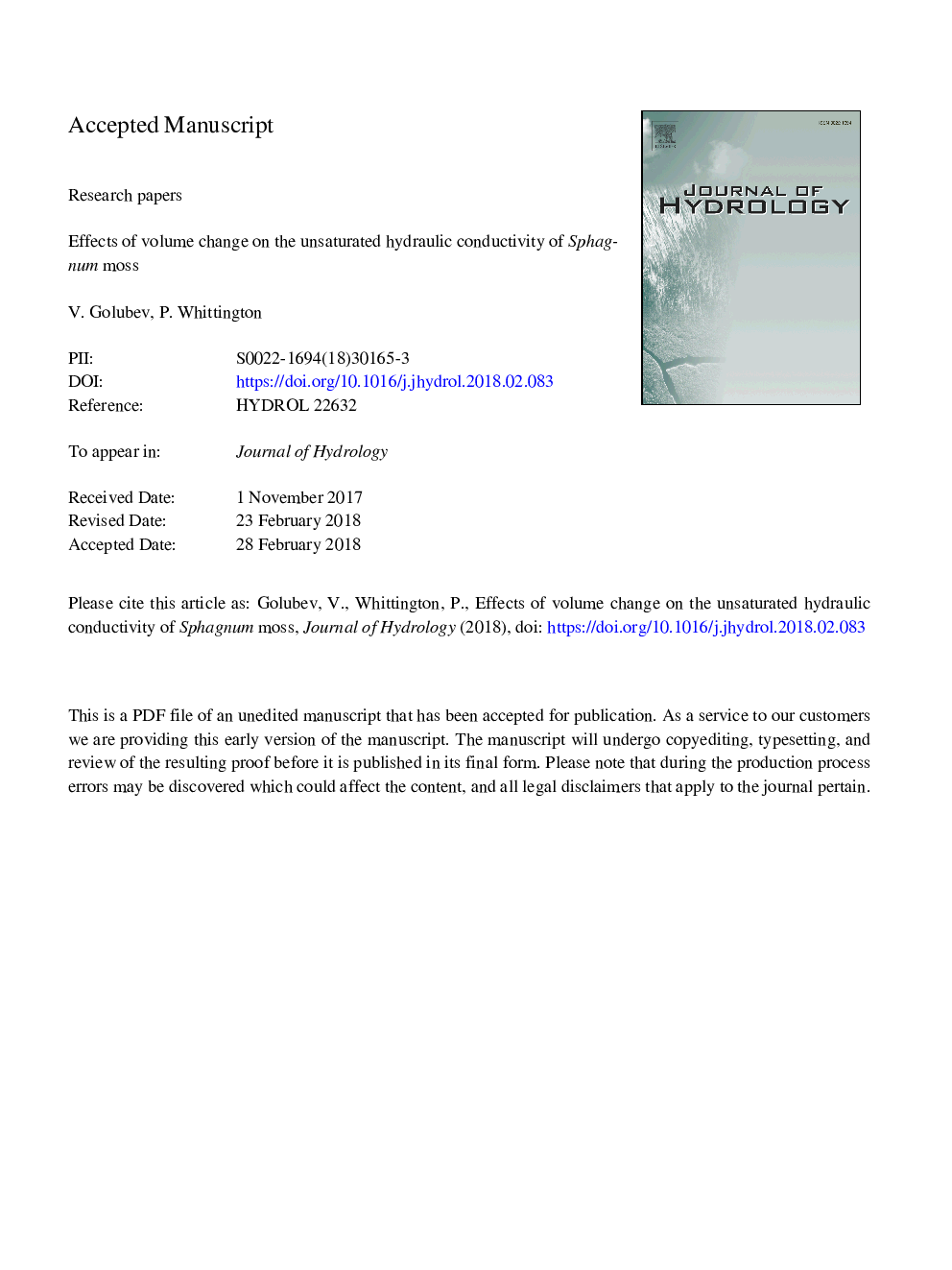| Article ID | Journal | Published Year | Pages | File Type |
|---|---|---|---|---|
| 8894953 | Journal of Hydrology | 2018 | 31 Pages |
Abstract
Due to the non-vascular nature of Sphagnum mosses, the capitula (growing surface) of the moss must rely solely on capillary action to receive water from beneath. Moss subsides and swells in accordance with water table levels, an effect called “mire-breathing”, which has been thought to be a self-preservation mechanism, although no systematic studies have been done to demonstrate exactly how volume change affects hydrophysical properties of moss. In this study, the unsaturated hydraulic conductivity (Kunsat) and water content of two different species of Sphagnum moss were measured at different compression rates, up to the maximum of 77%. The findings show that the Kunsat increases by up to an order of magnitude (10Ã) with compression up to a certain bulk density of the moss, after which higher levels of compression result in lowered unsaturated hydraulic conductivity. This was coupled with an increase in soil water retention with increased compression. The increase of the Kunsat with compression suggests that the mire-breathing effect should be considered a self-preservation mechanism to provide sufficient amount of water to growing moss in times of low water availability.
Related Topics
Physical Sciences and Engineering
Earth and Planetary Sciences
Earth-Surface Processes
Authors
V. Golubev, P. Whittington,
